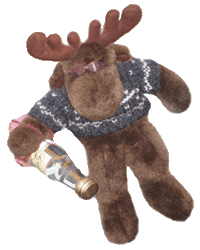Every day, Sol rode through the sky on her chariot, pulled by two horses named Arvak and Alsvid. She was chased during the day by Skoll, a wolf that wanted to devour her. Solar eclipses signified that Skoll had almost caught up to her. It is fated that Skoll will eventually catch Sol and eat her, though she would then be replaced by her daughter. The earth was protected from the full heat of the sun by Svalin, who stood between the earth and Sol. In Norse belief, the sun did not give light; this was caused by the manes of Alsvid and Arvak.
Sol was also called Sunna, Sunne and Frau Sunne, which is a derivation of the words sun and Sunday. The sun itself was called Alfrodull, meaning "glory of elves".
The Goddess
Elder Futhark Sowilo rune, earlier ("Σ") variant.
Elder Futhark Sowilo rune, later ("S") variant.
Anglo-Saxon Sigel / Younger Futhark Sol rune
 oblique Sig Rune as used in Nazi mysticism
oblique Sig Rune as used in Nazi mysticismSól rune
The Elder Futhark s rune (reconstructed name *Sowilo) is attested in two variants, a Σ shape (four strokes), more prevalent in earlier (3rd to 5th century) inscriptions (e.g. Kylver stone), and an S shape (three strokes), more prevalent in later (5th to 7th century) inscriptions (e.g. Golden horns of Gallehus, Seeland-II-C).
Coincidentially, the Proto-Canaanite letter šin from which the Old Italic s letter ancestral to the rune was derived was itself named after the Sun, shamash, based on the Egyptian uraeus hieroglyph.
Elder Futhark
The Younger Futhark Sol and the Anglo-Saxon Futhorc Sigel runes are identical in shape, a rotated version of the later Elder Futhark rune, with the middle stroke slanting upwards, and the initial and final strokes vertical. Anglo-Saxon sigel (siȝel) is phonologically sījel /si:jel/ (from *sæwel), the yogh being only orthographical.
The Anglo-Saxon rune poem:
ᛋ semannum symble biþ on hihte, ðonne hi hine feriaþ ofer fisces beþ, / oþ hi brimhengest bringeþ to lande.
"The Sun is ever a joy in the hopes of seafarers / when they journey away over the fishes' bath, / until the courser of the deep bears them to land."
The Icelandic rune poem:
ᛋ er skýja skjöldr / ok skínandi röðull / ok ísa aldrtregi. / rota siklingr.
"Sun is shield of the clouds / and shining ray /and destroyer of ice."
The Norwegian rune poem:
ᛋ er landa ljóme / lúti ek helgum dóme.
"Sun is the light of the world / I bow to the divine decree."
Younger Futhark and Anglo-Saxon Futhorc
Modern usage
No comments:
Post a Comment